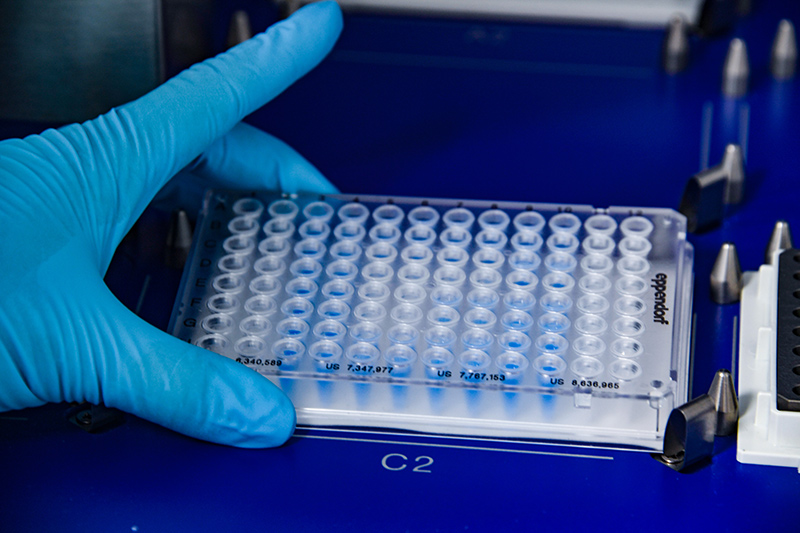Givaudan Active Beauty moves forward in Microbiome Research while presenting new scientific results to highlight the impact of site and skin types to get a healthy skin microbiota.
In line with our 2020 strategy to bring more health and wellness solutions to our customers, our experts continue to go deeper in Microbiome Research, confirming our leadership in this central topic for our beauty industry.
The bacterial skin ecosystem is very complex. Both bacterial abundance and diversity are highly variable, depending on whether normal, dry, oily or combined cutaneous zones are considered. The bacterial communities are thus shaped by physiological and general features such as gender, age... Beyond the physiologic driving force, the inter-individual variability is elevated for any specific zone.
Assuming that, our experts have decided to figure out how skin microbiota and human cells interplay.
To assess the impact of active cosmetic ingredients on skin microbiota, a detailed description of skin microbiota (i.e. the list of the various microorganisms present in the sample and their proportion relative to the total microbial population) from healthy skin is needed. Such a description will encompass several body parts from a sufficiently large population in order to comply with statistical relevance.
At IFSCC Congress in Munich, Givaudan researchers' introduced results of an in-going global programme devoted to the characterisation of skin microbiota corresponding to five selected zones that mainly differ for their sebum content. As initially suggested by E. Sheldon in 2017, the DNA molecule can be regarded as a "how-to" book in which the information is organised into sections, words and letters. Only four letters compose DNA and words contain only three letters.
The specific arrangements of words constitute the instructions (genes). A disruptive discovery in the 70's established that specific parts of some DNA fragments can be viewed as genetic markers that are intimately related to the origin and identity of the corresponding organisms.
Thus, the traditional culture-based techniques for identifying microorganisms are presently complemented by in-silico methods. These in-silico methods only rely on the determination of the composition of parts or of the complete DNA chromosome, depending on the expected level of accuracy requested by the study; being culture-independent, they are able to reveal the presence of non-culturable species, these ones being in some environments by far the most abundant species.
As a consequence, the work devoted to the characterisation of skin microbiota consisted in isolating the DNA of the collected microorganisms, determining the sequence (the chain of letters) of specific DNA regions (genes of ribosomal RNA 16S) and then comparing the obtained sequences with those present in databases to assign, with a satis-factory level of confidence, the organism having produced the read sequences to an origin (e.g. phylum and family) and a name (genus and if possible, species).
The work flow started by gathering hundreds of samples thanks to cotton swabbing of forehead, nose, cheek, forearm, calf from more than 70 healthy women, each sample being accompanied by appropriated biometrics (pH, transepidermal water loss, hydration, sebum output). Following sampling, the microbial cells are lysed according to a proprietary optimised method. Each bacteria releases its DNA and , at the end, a very complex multi-origin DNA mixture (named metagenomic DNA since it represents the DNA of the complete population) is obtained.

Metagenomic DNA is purified and precisely quantified ac-cording to an optimised process described in an IFSCC 2015 communication (Givaudan is indeed a pioneer in skin microbiomics research, i.e. the in-depth study of skin microbial populations).
In the present work, just a small fragment of the DNA molecule is deciphered. As previously mentioned, it can be described as a label that is scientifically proven to be convenient for establishing the family name of the bacteria from which it has been extracted. Sequencing was per-formed under the specifications of Givaudan by a Toulouse-based sequencing platform equipped with up to-date sequencing equipments (Illumina MiSeq).
A tremendous number of data was obtained (each sample delivers about 70000 fragments, each containing about 500 nucleotide units; in total, more than 12 billion of letters were detected) and after bioinformatics treatment, the taxonomical origin of each sequence was assessed using a proprietary pipeline including a selected public database which provides quality checked and regularly updated aligned sequences for all the organisms.
At the end of the process, we thus describe an average microbiota composition for each investigated body site; we associate some of specific microorganisms with the different physiological metrics collected, epidermal sebum content being the most significant to date. The collected data and findings will be used in the conception of new actives; re-examination of existing references would be also carried out as well for augmenting their consumer value.
Patrick Robe, Metagenomics project manager, said: "We demonstrated with this new study that a better understanding of the links between skin and microbiota composition would help to address the impact of active cosmetic ingredients on the skin microbiota from a subset of characterised volunteers."
To find out more about our Leadership in Microbiomics, we invite you to visit our website https://www.givaudan.com/fragrances/active-beauty.

